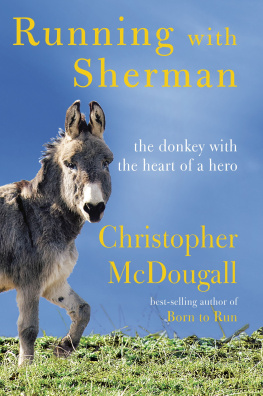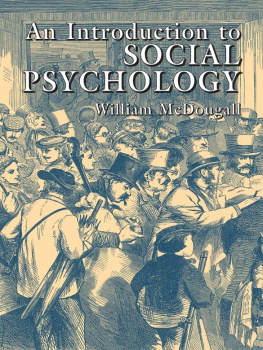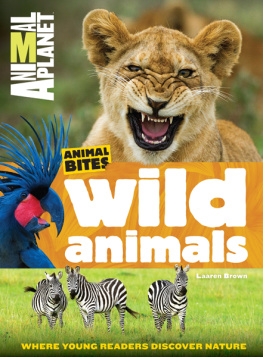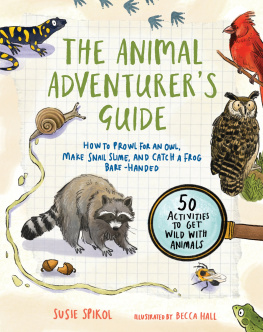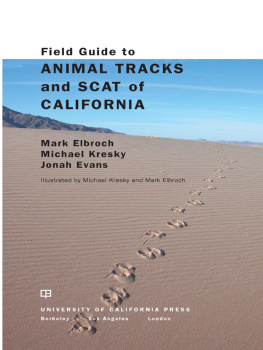Copyright 2015 by Len McDougall
All rights to any and all materials in copyright owned by the publisher are strictly reserved by the publisher.
All Rights Reserved. No part of this book may be reproduced in any manner without the express written consent of the publisher, except in the case of brief excerpts in critical reviews or articles. All inquiries should be addressed to Skyhorse Publishing, 307 West 36th Street, 11th Floor, New York, NY 10018.
Skyhorse Publishing books may be purchased in bulk at special discounts for sales promotion, corporate gifts, fund-raising, or educational purposes. Special editions can also be created to specifications. For details, contact the Special Sales Department, Skyhorse Publishing, 307 West 36th Street, 11th Floor, New York, NY 10018 or .
www.skyhorsepublishing.com
Library of Congress Cataloging-in-Publication Date is available on file.
Cover design by Jane Sheppard
Print ISBN: 978-1-62914-406-1
Ebook ISBN: 978-1-63220-151-5
Printed in China
Contents
Hooved Animals

Family Cervidae
The cervids, members of the deer family, are ungulates (hooved animals) of the order Artiodactyla (hooved animals with an even number of toes). All cervids have a split hoof, which is actually a pair of modified, heavily nailed toes in front and a pair of smaller toes, called dewclaws, located slightly above them at the rear of the foot. All species leave a split, heart-shaped track, and dewclaws may print behind the hooves in softer terrain. All species are herbivores, and none have upper incisors, only a hard upper palate that enables them to tear away food plants by pinning them between incisors and the palate.
NEW WORLD MOOSE
( Alces alces )
The largest member of the deer family, the moose, is also native to northern Europe and Russia, where it was once known as elk. It was misnamed after explorers to the New World applied that name to the first giant deer they encountered, the wapiti. The wapiti was thereafter known as the American elk, while the true American elk became moose.
Geographic Range
Moose are found throughout the northern United States, in states bordering Canada, throughout southern Canada and into Alaska, and downward along the Rocky Mountains into Colorado.
Habitat
Moose prefer forests with plenty of water. Pines offer protection from driving winds and snow, while willows, elkslip, and aquatic browse along shorelines provide summer browse. Biting fly and mosquito hatches of spring and early summer cause moose to migrate to higher elevations where rivers and ponds are swollen with melting snow, and strong breezes keep biting insects from landing on them.
Winter browsing includes poplar, aspen, and cottonwood bark, which scars trees with identifiable sign. Moose domains typically encompass just a few square miles, and the animals move only as needed to find a location that offers protection from weather, ample food until spring, and water. Mountain moose move to protected valleys, and forest moose go to secluded beaver ponds and floodings where spring-fed inlets never freeze entirely.
Physical Characteristics
Mass: Bulls are 1,400 pounds or more at maturity; cows are roughly 10 percent smaller than bulls.
Body: Shoulder height is 5 to 6 feet; body length is 8 to 10 feet from tip of nose to tail. Moose have long legs, a thick rump, and a broad back. Bulls carry palmated antlers from spring to early winter, when old antlers that can span 4 feet across are shed and new ones begin to grow.
The mooses face is distinctive, with a long, thick muzzle, a big nose, and a large, drooping lower lip. A fold of loose skin, or dewlap, hangs beneath the jaws of mature males, growing longer as its owner ages. Large, erect ears are prominent and pointed. Moose have excellent senses of smell and hearing but nearsighted vision.
Tail: It is similar to the domestic cow, but shorter, about 8 inches long.
Tracks: Being heavy, moose leave clear tracks in all but the hardest soil. Split-heart hoof prints are similar to the whitetails but more than twice the size, measuring 4 to 7 inches long, 7 to 9 inches with dewclaws, and they are unlike the more circular and concave wapiti track. On hardpacked trails only the foremost portions of hooves leave an impression, resulting in shorter tracks that can be mistaken for those of a whitetail.

This 3-year-old bull moose, with budding antlers still in velvet, is feeding on grasses, horsetails, and asters in a damp ditch.

This healthy young bull carries several harmless cysts, like human warts, that are likely to freeze and fall off in the coming winter.
Scat: Normal moose scat is typical of deer, consisting of packed brown pellets that are egg or acorn shaped, 1 to almost 2 inches long, about twice the size of whitetail or mule deer scats. Variations in shape occur with changes in diet, with soft masses that resemble cow pies occurring when an animal is making the transition between bark and woody shrubs to succulents and fruits. A scat unique to moose is the mushroom-shaped dropping that appears most commonly in moose that have fed on long, green grasses.
Coloration: The fur is short and dark brown, becoming interspersed with gray (grizzled) as the animal ages.
Sign: Moose leave identifiable marks. The paths they plow through browsing thickets are obvious. Shrubs at the side of the trail are broken and uprooted when bulls practice with their antlers in late summer and autumn, and there may be scraps of discarded antler velvet at these places. Moose beds and wallows are identifiable as horse-size impressions of plants and soil that have been compressed under massive weight. Moose entry and exit points into mucky bogs are marked by wide troughs.
Winter signs of moose (and elk) include gnawings in the smooth bark of poplar and other softwood trees that serve as winter foods. These trees are scabbed over with rough, black bark as the wound heals.
Vocalizations: Moose are generally silent. A cow calling for a calf emits a soft lowing, like the mooing of a domestic cow. A mother may also issue a huffing grunt to warn off intruders. During the autumn mating season, moose become more vocal, especially amorous bulls. Rutting males are boisterous and fearless and have been known to charge people, livestock, and even automobiles. Bull moose in heat may grunt like hogs and bellow like domestic bulls. The more vulnerable cows and calves communicate more quietly.

This bull moose in full autumn antlers is preparing to take one or more mates. (Photo courtesy USFWS.)

A very protective moose mother in spring with two week-old nursing calves. (Photo courtesy of USFWS.)


